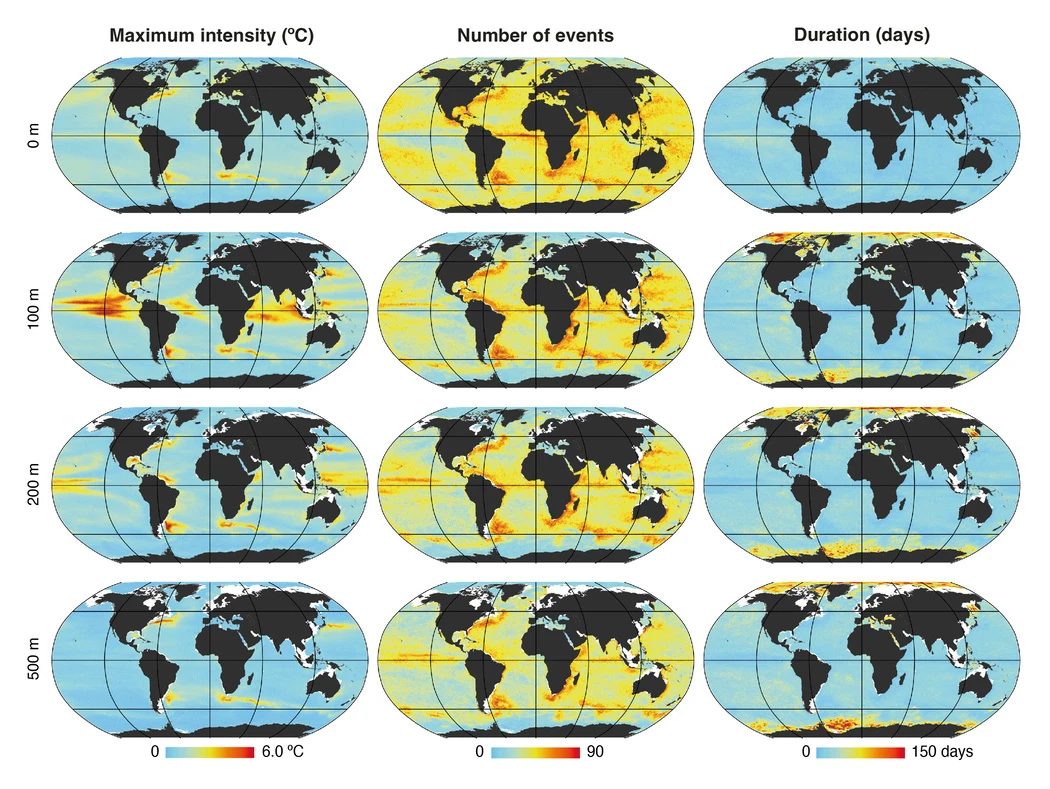Scientific publication
Heatwaves are more intense and persist longer in deeper waters
Global analysis shows deep marine biodiversity facing higher risk of exposure to the cumulative effect of intense and prolonged heatwave events.
Credits: Google, U.S. Geological Survey, INEGI, Landsat / Copernicus
The world’s oceans have reached their highest recorded temperatures in 2023, and it is forecasted that the intensity, duration, and frequency of marine heatwaves - defined as periods of elevated sea temperatures lasting at least five days - will continue to increase throughout the century. Until now, the impacts and projections of these events have focused on the sea surface, however, localized observations suggest that marine heatwaves can occur below the surface and persist for years. The rising of ocean temperatures has profound consequences for the planet’s geochemical and biological systems, directly affecting marine flora and fauna, and therefore the resources humans depend on.
Using global-level sea temperature observations and reanalysis data, our reseearch group estimated the duration and intensity of marine heatwaves from 1993 to 2019 at depths down to 2,000 meters. The research published in the journal Nature Climate Change, shows that the highest intensity of marine heatwaves is not at the surface but in the subsurface, specifically between 50 and 250 meters deep. “Against our initial expectations, we found that marine heat waves are more intense below the surface, and their duration can last up to double, when compared to the surface,” notes Eliza Fragkopoulou, the leading author of the study.

We combined these findings with data on marine species ranges, and predicted that subsurface biodiversity could be at risk due to higher cumulative intensity (an indicator of thermal stress) in the first 250 meters. Jorge Assis, who led the research explains: “Across the globe, we identified regions of higher risk for marine biodiversity, including significant portions of the Indian and North Atlantic Oceans, where high cumulative heatwave intensity coincides with areas of predicted high species sensitivity to thermal stress. What we’ve discovered is that beyond readily detectable surface effects, such as losses of ecosystem structuring species of mangrove and kelp forests and coral reefs, marine heatwaves can have profound effects on deeper biodiversity, down to 250 meters.”
A noteworthy aspect of this study is the extension of temperature changes from the surface to greatest depths. However, temperature data from deep areas should be taken with caution, especially data prior to 2004, when a more reliable measurement system was implemented. In addition to temperature increases, other changes in ocean conditions need consideration. Temperature extremes are expected to redistribute marine species from the surface to the deep ocean, however, additional constrains, such as low oxygen regions, may hinder such redistribution, with unpredictable consequences. In this context, additional monitoring of marine biodiversity under ongoing extreme climate conditions is needed to better understand and predict their effects.
Main reference
E. Fragkopoulou, A. Sen Gupta, M.J. Costello, T. Wernberg, M.B. Araújo, E.A. Serrão, O. De Clerck, J. Assis (2023) Marine biodiversity exposed to prolonged and intense subsurface heatwaves. Nature Climate Change.
- Featured publications